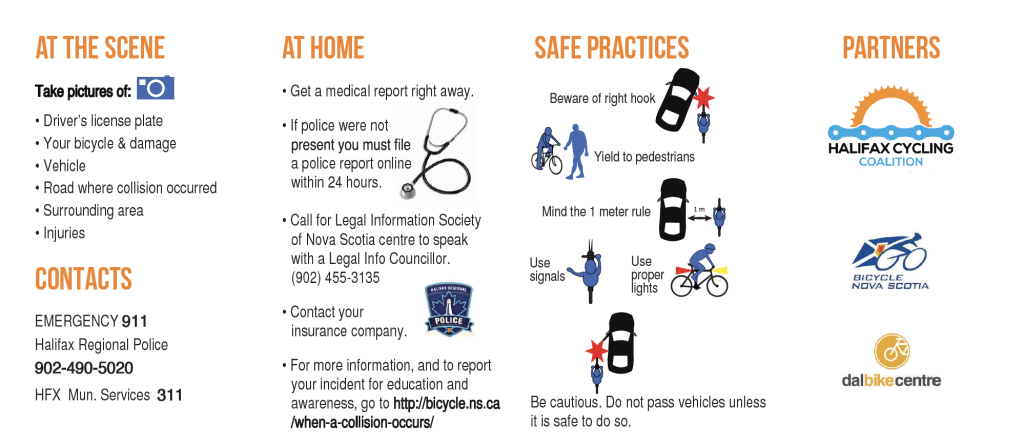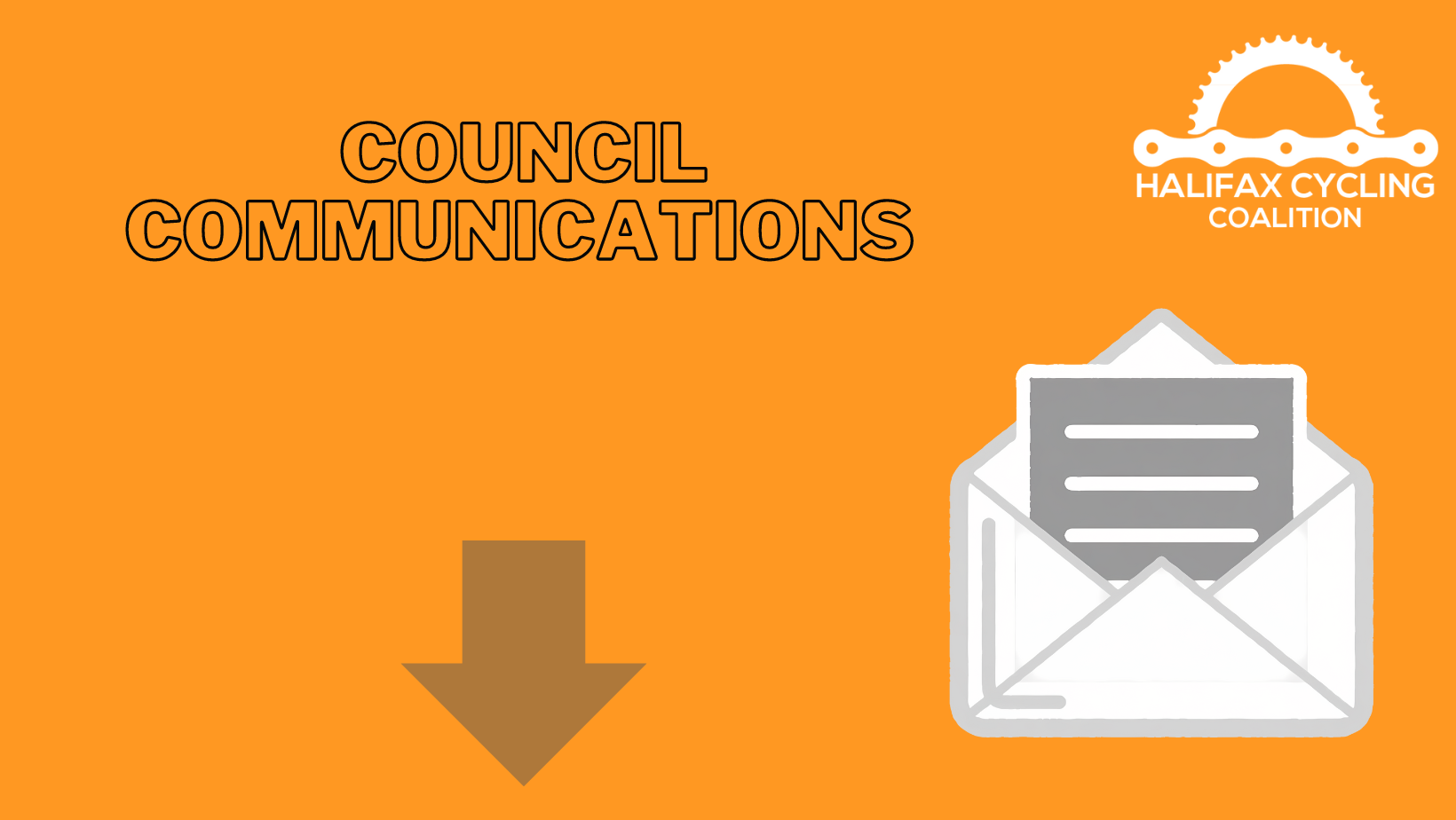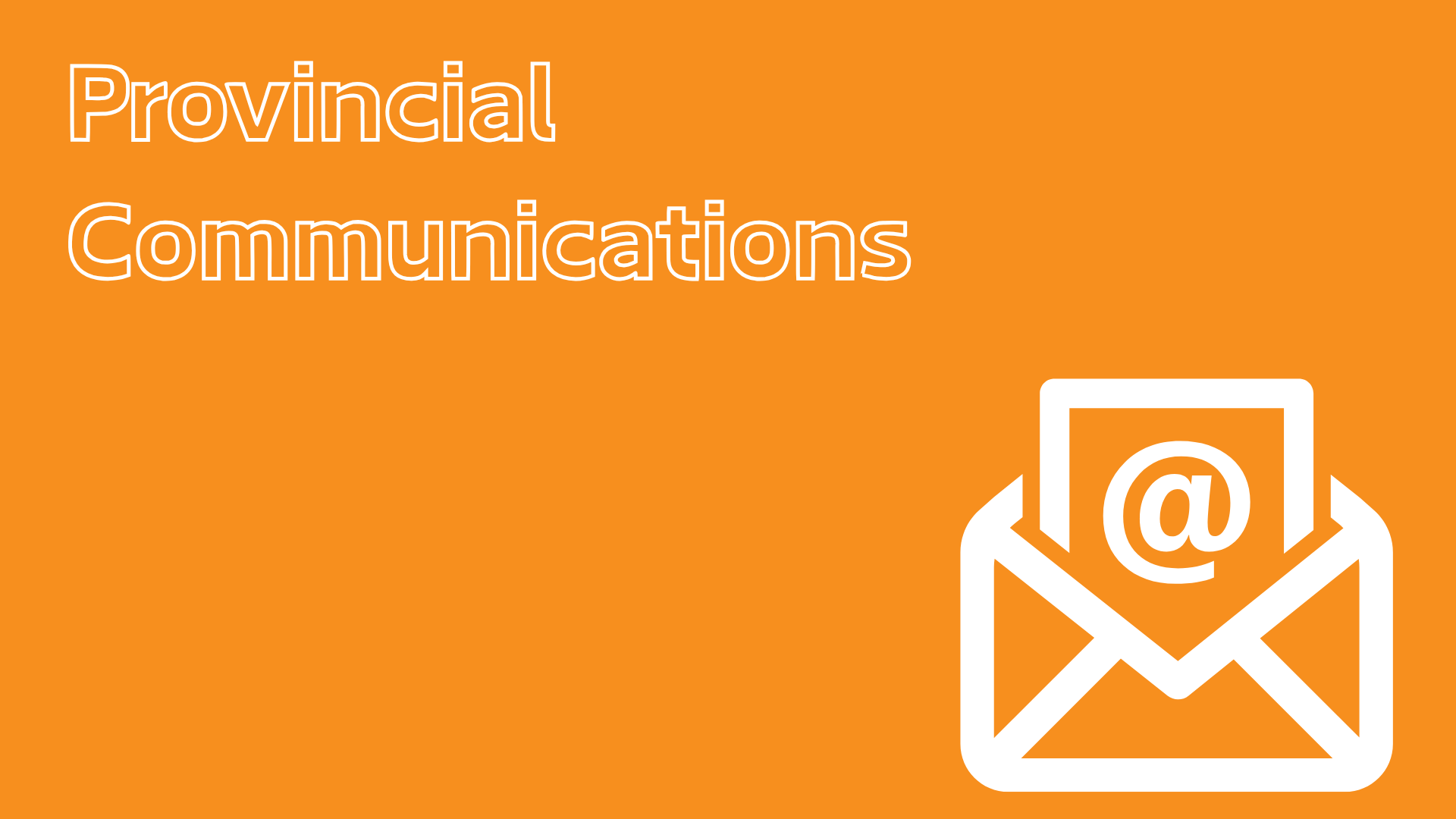
Photo: What to do when in a collission
Being part of a collision is rare but you should be prepared in the event that you are involved in an incident while riding your bike. We have developed a collision card (printable version) that can be kept in a wallet so you have it with you in case you need it. The collision cards are available at our outreach events. We have included some basic steps on this page for what you should do if you are in a collision.
At the scene
1. Exchange information with the driver.
All people on bikes and all drivers of a motor vehicle on the highway are required to have identification with them when cycling or driving. Drivers are also required to have proof of auto insurance and a valid driver’s licence.
Exchange names and contact information with the driver and obtain the address, driver’s licence number, contact information for the insurance company and insurance broker involved, the insurance policy number. Also, obtain the licence plate number of the vehicle involved. Taking a photo of the driver’s licence, vehicle registration, insurance card and licence plate with your smart phone is the easiest way to do this.
Gather and record the following information (space available on collision cards if you have one):
- Driver Information: first name, last name, driver’s license #, and phone #
- Incident Information: time, location, vehicle make, vehicle colour, vehicle model, insurance company, insurance policy #, license plate #, province, witness name and phone number, police report #, police officer’s name
2. Take photos
A picture paints a thousand words. Take as many photos as you can, if you are able. If you’re not able to, ask someone to take them for you. Try to get photos of the vehicle and your bicycle in the location they ended up after the collision and before they are moved. This is not always possible. Look for any damage to the car and take a photo of that area.
Stand back as far as you need to get a photo of the vicinity of the collision. For example, take a photo of the entire intersection if the collision occurred in an intersection. Capture any relevant signs – signs designating a bicycle lane, or a stop sign or yield sign, for example.
Take photos of:
- Driver’s license plate
- Your bicycle and damage
- Vehicle
- Road where collision occurred
- Surrounding area
- Injuries
3. Call the police. Cooperate with police and other emergency responders if any arrive.
Call the police if no one else has done so and if you are able to do so. If the police or other emergency responders arrive cooperate with them and follow their directions regarding safety. Unless you have reason to suspect that the collision was your fault, you should feel free to provide information to the police about the incident when asked. Always tell the truth.
After you get home
4. Seek medical attention immediately if required.
Often an ambulance will arrive at the scene and attend to any injuries you may have. If not, report to the local emergency hospital if needed. Remember that symptoms from traumatic injuries may not be readily apparent or may appear later. Monitor yourself and if anything develops visit your doctor or the hospital. Follow the medical advice received.
5. File a police report.
File a police report. In Nova Scotia, a police report is required by law if there is more than $2,000.00 worth of property damage to the car or the bicycle or anyone is injured. As a road user, people on bikes are bound by this legal requirement as well as the driver of a motor vehicle. Even if it doesn’t look like there are significant damages it is a still a good idea to file a report. The report serves as a record of incident having happened. Don’t fall into the trap of agreeing not to report the incident to the police or an insurer. While someone may promise to get back in touch and sort it out later, there is no way to know if the person will act in good faith. There is nothing to lose by reporting the incident to the police.
6. Call your insurance company
Report the incident to your insurers. Unlike drivers of motorized vehicles, a person who bikes does not need to carry insurance on their bicycle. However, a homeowners’ insurance or own auto insurance could provide coverage depending on the circumstances, even if the incident occurred far away from home and the person biking’s car was not involved. Homeowner insurance may cover damage to your bicycle or equipment or pay for damage that your negligence caused.
Your car insurance may provide extra coverage if the driver of the vehicle involved was not fully insured. If you are injured and in need of medical care not covered by MSI or income replacement if you are off work, you will need to report the incident to the driver’s insurer. As the insurer for the only insured vehicle involved in the incident, the driver’s insurer is required by law to provide limited no-fault medical and income replacement benefits (often referred to as “Section B benefits”) to anyone injured in the incident.
Just be careful to make sure that the insurance representative you are dealing with is handling the Section B benefits claim, since the same insurance company will also be defending against the fault-based negligence claim you might advance.
7. Write a Statement
As soon as you are able to, you should write or type a statement as to what happened while it is fresh in your memory. Include everything you remember about how the crash happened in as much detail as you can recall. Note the date, the time, the weather, what people said at the scene, the behaviour of the driver and passengers, and any other relevant details. Injury claims can take months or years to resolve, and this record will help refresh your memory down the road. Emailing yourself is a good way to do this so there is proof of the date and time that you wrote down these facts, if it is later suggested they were prepared more recently.
8. Consult with a Lawyer
It is never to soon to consult with a lawyer. Almost all personal injury lawyers will provide you with a free consultation which should help you understand your rights and next steps to setting up a successful claim for compensation for your losses.
9. Record Incident on Map
Recording the incident on bikemaps.org will help us to collect evidence to inform and support advocacy for safer cycling conditions.
Contacts
- Emergency Services – #911
- Halifax Regional Police – (902) 490-5020
- Wagners Law: [email protected], T: 902-425-7330





